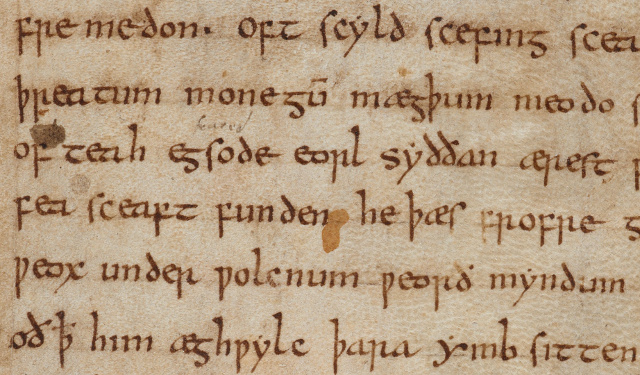
In which I anger a large number of baby boomers by calling learning to write cursive a massive waste of time.
***
I hate cursive writing. Teaching children to “handwrite” (as though printing by hand somehow isn’t writing) is a massive waste of time. It’s dying out, and I’m not sorry to see it go. Frankly, if it’s ever buried, I’ll be happy to dance on its grave.
That may sound extreme, but the fact of the matter is that I’m getting extraordinarily tired of pro-cursive activists and their complaints about an outmoded and outdated technology not being included in the so-called common core educational standards.
Cursive is a series of different (and often mutually unintelligible) hand-written scripts that were created for the purpose of speeding up writing. In English they really started to take off leading up to the invention of the printing press, when demand for books started to spike but the only option was to have them copied out by hand.* Since time was money, cursive was cheaper: you could write out sections (or complete copies) of texts in less time if you were prepared to accept them in joined-up chicken scratch rather than something altogether more aesthetically pleasing like a protogothic book hand.
But now we have computers. Typing is our preferred method of conveying ideas quickly in textual form. And if we want to stop and think as we take notes, we can print, in letters that actually look like the letters we read. A second alphabet — in which the letter Q looks like a massive curly number 2, in which the letter z looks as though it’s been crossbred with the letter y, and in which the capital letter G looks like literally nothing else on this Earth — is entirely unnecessary.
The nineteenth- and early-twentieth-century proponents of cursive in America were moralists, like Spencer and Palmer, who thought cultivating careful handwriting was a means of cultivating upstanding moral citizens. This, not to put too fine a point on it, is bullsh*t.
And the major arguments for keeping this outdated technology are weakly supported at best:
- Students won’t be able to read the Declaration of Independence? You can teach them to read it without teaching them to write it. We don’t teach how to write insular minuscule, but I’ve still learned to read the original text of Beowulf.
- You do better if you write notes by hand? Great: we can print them by hand using an alphabet we already know. Scientific studies have only demonstrated the difference between typing and writing by hand, not specifically cursive. Plus, they think the fact of it being slower is responsible for the benefit, so cursive might actually be worse for all the marginal gains in speed it offers.
- It might help people with dyslexia (I’ve heard this repeated, but not seen evidence of it yet)? Well, so does this (computer) font.
- Cursive helps develop fine motor control and hand-eye coordination? So do drawing (more art in the classroom, please!) and video games (!!).
- People need cursive to sign their names? Have you ever heard of PINs and biometrics? Your signature doesn’t even have to be your signature.
I have not met an argument in favour of teaching cursive that can justify the amount of investment required, in terms of time and tedium, to pay off. Even teaching typing appears to be a waste of time.
Want to spent time on something in the common core? Teach a second language from a young age. Teach the basics of computer coding. Teach drawing or calligraphy. Hell, teach printing if you’re so gung-ho about writing by hand. Just don’t waste kids’ time in learning to write a second version of every letter just so you can force your misguided nostalgia onto them.
***
Richard Ford Burley is a human, writer, and doctoral candidate at Boston College, as well as an editor at Ledger, the first academic journal devoted to Bitcoin and other cryptocurrencies. In his spare time he writes about science, skepticism, feminism, and futurism here at This Week In Tomorrow.
*Medievalist readers: I apologize for the massive oversimplifications I’m about to type, I’m just trying to get through this quickly.
